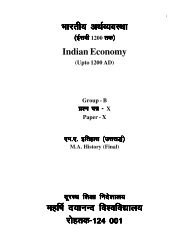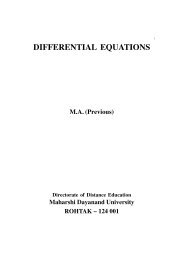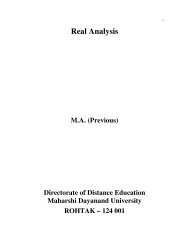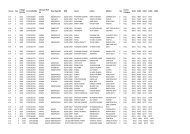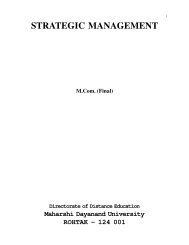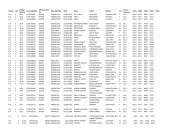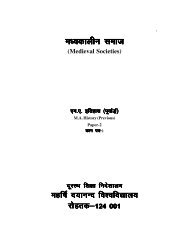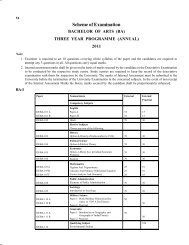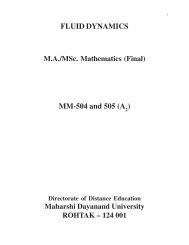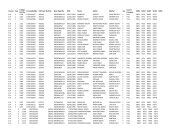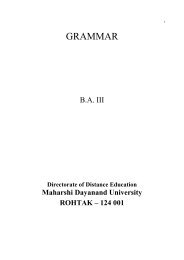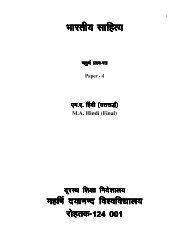Advanced Abstract Algebra - Maharshi Dayanand University, Rohtak
Advanced Abstract Algebra - Maharshi Dayanand University, Rohtak
Advanced Abstract Algebra - Maharshi Dayanand University, Rohtak
Create successful ePaper yourself
Turn your PDF publications into a flip-book with our unique Google optimized e-Paper software.
90<br />
ADVANCED ABSTRACT ALGEBRA<br />
(m,a) (p,c) + (n, b) (p,c) = (mp, pa + mc + ac) + (np, pb + nc + bc)<br />
= (mp + np, pa + mc + ac + pb + nc + bc)<br />
Therefore<br />
[(m,a) + (n,b)](p,c) = (m,a) (p,c) + (n,b) (p,c)<br />
Similarly we can check it for right distributive law.<br />
(vii)<br />
(1,0) (m, a) = (m,a) = (m,a) (1, 0)<br />
Hence (1, 0) = 1 is unity of S.<br />
Hence S is a ring with unit element.<br />
Consider the set<br />
Since<br />
and<br />
T = {(0,a) | A ∈ R}<br />
(0,a) + (0,b) = (0, a+b) ∈ T<br />
0 = (0, 0) ∈ T<br />
− (0,a) = (0, −a) ∈ T<br />
(0,a)(0,b) = (0, ab) ∈ T,<br />
therefore T is a subring of S.<br />
We define a mapping<br />
by<br />
f : R → T<br />
f(a) = (0,a) , a ∈ R<br />
Then<br />
f(a+b) = (0, a+b)<br />
= (0, a) + (0, b)<br />
= f(a) + f(b)<br />
and<br />
f(ab) = (0, ab)<br />
= (0, a) (0, b)<br />
= f(a) + f(b)<br />
Thus f is a ring homomorphism. Also,<br />
f(a) = f(b) (0, a) = (0, b)<br />
a = b .<br />
Therefore f is an isomorphism and hence R can be imbedded in S.<br />
Theorem. Every integral domain can be imbedded in a field.<br />
Proof. Let D be an integral domain and<br />
S = {(a,b) | a, b ∈ D, b ≠ 0}



